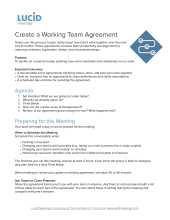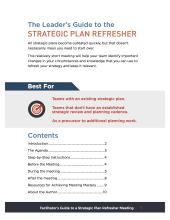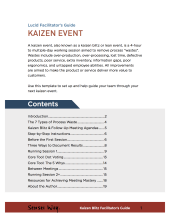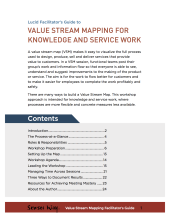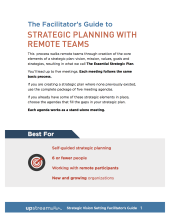You can find an introduction to Workshops in Chapter 27 of Where the Action Is. These resources will help you plan, run, and troubleshoot the specific Workshops your team needs.
Definition
Workshops are custom-designed meetings, usually over two hours, than can be used to achieve a myriad of goals.
Questions Answered
- We have lots of questions to answer (and will devote two or more hours to answering them).
Examples
- Project, Program and Product Kickoffs
- Team Chartering
- Design Workshops
- Value Stream Mapping Strategy Workshops
- Team Building Workshop
Purpose
- To focus and complete one or more tasks.
Work Outcomes
- Group formation and identity creation.
- Commitment and clarity on execution.
- One or more tangible results. Real work product comes out of Workshops!
Human Outcomes
- A shared memory and experience; possible bonding.
- Insight into other team members’ perspectives.
- New knowledge.
Related Resources
Meeting School:
Online Education
Learn the meeting skills and systems that deliver results.
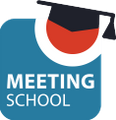 See All Courses
See All Courses
Meeting Agenda Templates and Guides
How to Create a Working Team AgreementElise Keith - Teams use this process to gain clarity about how they’ll work together over the next 3 to 6 months. These agreements increase team productivity and alignment by reducing confusion, duplication, delays, and misunderstandings. |
|
How to Refresh Your Strategic PlanPaul Axtell - All strategic plans become outdated quickly, but that doesn’t necessarily mean you need to start over. This relatively short meeting agenda template will help your team identify important changes in your circumstances and knowledge that you can use to refresh your strategy and keep it relevant. |
|
How to Run a Kaizen EventDan Prock - A kaizen event, also known as a kaizen blitz or lean event, is a 4-hour to multiple-day working session aimed to remove process “wastes”. Wastes include over-production, over-processing, lost time, defective products, poor service, extra inventory, information gaps, poor ergonomics, and untapped employee abilities... [ more ] |
|
How to Run a Project Kickoff MeetingElise Keith - This is the meeting agenda template the team at Lucid Meetings uses to run kickoffs for smaller projects. It covers all the basics, and gets everyone involved to create a strong mutual commitment to the project's success. During this meeting, you'll lead two separate discussions using techniques developed by expert... [ more ] |
|
How to Run a Strategic Plan Quarterly Refresh MeetingElise Keith - During this meeting, teams review their strategic progress and establish targets for the next 90 days. Part retrospective, part working session, and part time-out, running a Quarterly Refresh makes sure your organization’s strategy stays present in everyone’s mind, up-to-date with changes in your environment, and... [ more ] |
|
How to Run a Value Stream Mapping WorkshopDan Prock - A value stream map makes it easy to visualize the process used to get value to the customer. Functional teams visualize their group’s work and information flow so that everyone is able to see, understand and improve the making of the product or service. The aim is for the work to flow better for customers and get... [ more ] |
|
The Complete Toolkit for Strategic Planning with Remote TeamsAnna O'Byrne - A strategic plan is a formal map that explains how your company will execute a chosen strategy. The plan should spell out where an organization is going over the next year or more and how it’s going to get there.Strategic planning with a remote team can present both challenges and opportunities. Although this is... [ more ] |
Glossary of Meeting Terms
Technique
The 2x2 Matrix is a decision support technique where the team plots options on a two-by-two matrix. Known also as a four blocker or magic quadrant, the matrix diagram is a simple square divided into four equal...
The 5 Whys is a technique used to determine the root cause of an issue. By repeatedly asking the question “Why” (five is a good rule of thumb), you can discover symptoms which may lead to the reason a problem exists...
Activity modeling is a method used to illustrate how a system works. In an activity modeling workshop, the group works together to outline a sequence of steps and the component pieces involved in creating a behavior...
An affinity diagram organizes a large number of ideas into related sets. Groups often create an affinity diagram as the second step in a brainstorming session. After everyone adds their ideas, the team looks at the...
Appreciative Inquiry techniques seek to build on the positive outcomes, successes, and highlights in a situation instead of focusing on how to counteract negative forces. Practitioners recognize that people are...
Breakout groups are used as a large group discussion technique designed to increase participation. During a large meeting or workshop, the facilitator may assign the group to work in smaller teams to answer a...
A check-in is a technique used at the beginning of a meeting to give everyone an opportunity to speak, and during meeting transitions to survey the group's current status. The simplest check-in is simply to ask each...
Concept mapping is a technique for graphically organizing and representing knowledge. The maps include concepts, usually enclosed in circles or boxes, and relationships between the concepts indicated by a connecting...
Environment scanning is a sense-making exercise teams use to uncover the outside trends that they should consider during the strategic planning process. Teams research and brainstorm the trends they see in their...
An Influence Diagram is a compact, graphical way to look at the factors involved in making a decision. Influence diagrams show how the decisions, variables at work, and desired outcomes relate to one another, which...
The KJ-Method or KJ Technique, is an idea generating and prioritizing technique named after its inventor, Jiro Kawakita. This technique is one of the most popular brainstorming variations for design, team,...
LEAN Coffee is one way to build an agenda on the fly. Groups using this structured meeting technique brainstorm then decide the topics to be discussed at the start of the meeting. This meeting technique works for...
Multivoting is a technique used to take a long list of possible solutions and either narrow it to a smaller list by priority or reduce it to a final selection. Each person in the group gets a set number of votes, and...
Mute mapping is an affinity diagramming approach designed to encourage equal participation and reduce bias. Mute mapping follows brainstorming. When all the ideas have been added, the team works to organize the ideas...
The Nominal Group Technique is a structured process for generating ideas and prioritizing the preferred options. First, the leader asks an open-ended question. Everyone silently writes down replies on individual...
PALPaR is a technique used by presenters to create an effective exchange in response to a proposal. The name of the technique is an acronym for:
Present
Ask
Listen
Pause
and
Reply
To...
A Powerful Starting Question is a question or set of questions that help a group visualize their answers. The questions fill a blank slate in each person’s mind with a detailed picture. The powerful starting question...
A PDPC is used to understand the steps related to reaching a goal then find ways to increase the chances that the plan will work as desired. During the meeting, the team reviews the project plan, looking specifically...
The real-time agenda is a process for co-creating, prioritizing and discussing a list of topics in real time.
A real-time agenda isn’t a type of meeting. It’s a technique that you can use in many different types of...
The term Round Robin is used to refer to two distinct techniques.
For some, a "round robin" is just another name for a go around.
For others, a round robin is a specialized brainwriting technique in which everyone...
The simple consensus workshop method includes four steps.
A group brainstorms ideas or responses, which are shared one at a time and posted to a shared space.
The group clusters the ideas by related themes or...
The SOAR analysis technique is used by teams as part of the planning process. SOAR stands for Strengths, Opportunities, Aspirations, and Results. SOAR was developed by Appreciative Inquiry practitioners looking for...
The Strategic War Room, contributed by Krister Forsberg, provides a way for leadership teams to come to a common understanding of insights about the organization. When complete, leaders get a comprehensive view (both...
A swim lane diagram is a type of flowchart. The diagram usually shows a process, and steps are divided into categories to distinguish which departments or employees are responsible for a certain set of actions....
Team-building activities include group activities and exercises designed to help people get to know one another and build trust. Many longer workshops and multi-day planning sessions begin with short team-building...
The vote-discuss-revote technique helps a group understand differences and discuss them to achieve consensus. Unlike single-round voting, this technique gives everyone an opportunity to advocate for an option they...
Meeting Type
A kickoff meeting, originating from football, is generally the first meeting with the project team and their client. This meeting comes after the basic project details have been defined, but before the main project...
A Pre-Mortem is a meeting before a project starts in which a team imagines what might happen to cause a project to fail. The team then works backward to create a plan to help prevent potential obstacles and increase...
